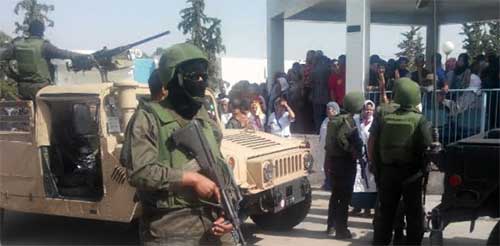 Social demands have inflamed the city of Kasserine since mid January and the discontent is now gaining in other regions of the country. An atmosphere reminiscent of 2010, just before the uprising against Ben Ali.
Social demands have inflamed the city of Kasserine since mid January and the discontent is now gaining in other regions of the country. An atmosphere reminiscent of 2010, just before the uprising against Ben Ali.
On January 17 in Kasserine (Northwest), Ridha Yahyaoui, a young unemployed rises to an electricity pylon to tell his anger. The reason ? His name is not on a list of hires in the public service established by the governorate. He wants to denounce influence peddling in favor of local elected parents. Perched on a pylon, dies electrocuted.
Immediately, Kasserine, where 30% of the population is in labor demand, blazes. Over 700 young people, very determined, begin a sit-in, blocking roads and governorate. The police retaliated with tear gas attacks. In 48 hours, the movement is spreading. The delegations of Rgueb, Menzel Bouzaiane, Meknassy, Mazouna, Gabes, El Fahs, Fernana follow. Places where the party was popular uprising that led to the fall of the Ben Ali regime January 14, 2011.
The same slogans in 2010-2011
Five years later, the same slogans are brandished, “work, dignity and social justice.” They signify the failure of successive governments to address youth employment crisis and reduce regional disparities, with unemployment rising to 15.2% in 2015 against 12% in 2010 and a poverty rate above the 20%.
The government of Habib Essid is on alert, although, unlike in 2011, police repression is more contained. Near Kasserine, terrorists are holed up in the mountains and neighborhoods of Hay and Ennour Ezzouhour, the most affected by unemployment, are considered recruiting homes for extremists. But despite the rise in social tension, the Minister of Employment, Zyed Laadheri, makes no representation; only the Assembly of People’s Representatives (ARP) dispatch a delegation to “listen to the demands.”
Check Also
Leaked Russian Records Reveal Obscure Firms Helping Bust Oil Sanctions on North Korea
For the past eight years, Russia and its fellow U.N. Security Council members have maintained …
 Eurasia Press & News
Eurasia Press & News


